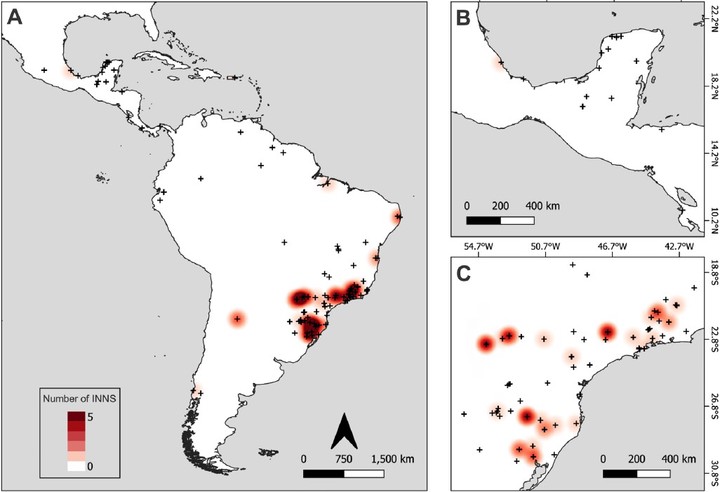 Image credit: Acta Botanica Brasilica
Image credit: Acta Botanica Brasilica
Abstract
Tropical forests are biologically significant ecosystems, yet they face increasing pressure from human activities, which has led to the introduction of invasive plant species. Despite this, much of the existing literature on plant invasions in tropical forests focuses on Old World forests and grasses, leaving Neotropical forests relatively understudied. To address this gap, we aimed to investigate patterns of woody plant invasions in Neotropical forests with different levels of leaf deciduousness and identify the key factors that explain the richness of invasive woody plants. We conducted a systematic review of floristic surveys in Neotropical forests, gathering data on climate, environmental, and anthropogenic variables for each study site. Our analysis revealed that the richness of invasive plants increased with greater temperature seasonality, higher accessibility, and elevated per capita gross domestic product, while it decreased with increased canopy cover. Higher temperature seasonality and accessibility were strong positive predictors of invasive plant richness. Subtropical Neotropical forests are more susceptible to the establishment of invasive species due to the higher temperature seasonality. In addition, factors such as leaf deciduousness and increased human accessibility further contribute to the susceptibility of these forests to the arrival and establishment of invasive woody plants.